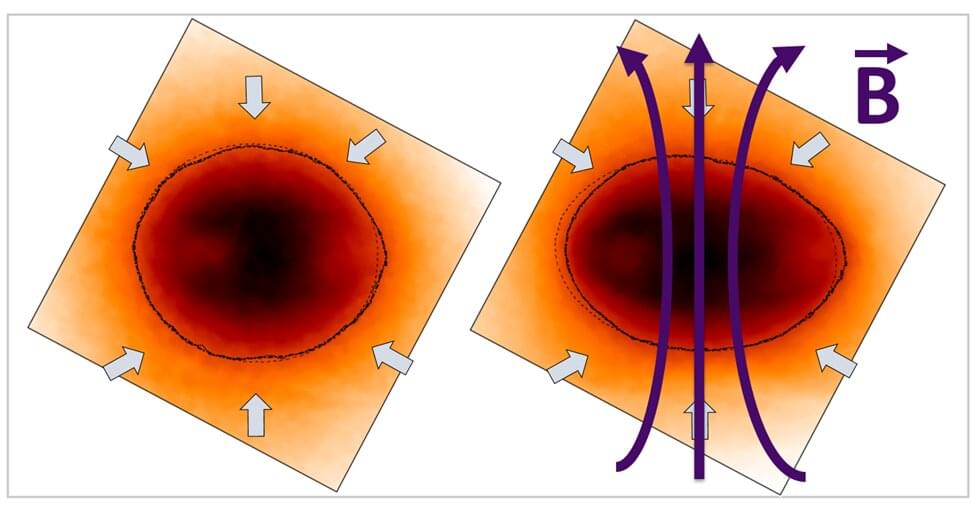Nuclear fusion is a widely studied process through which atomic nuclei of a low atomic number fuse together to form a heavier nucleus, while releasing a large amount of energy. Nuclear fusion reactions can be produced using a method known as inertial confinement fusion, which entails the use of powerful lasers to implode a fuel capsule and produce plasma.
Researchers at Massachusetts Institute of Technology (MIT), University of Delaware, University of Rochester, the Lawrence Livermore National Laboratory, Imperial College London, and University of Rome La Sapienza have recently showed what happens to this implosion when one applies a strong magnetic field to the fuel capsule used for inertial confinement fusion. Their paper, published in Physical Review Letters, demonstrates that strong magnetic fields flatten the shape of inertial fusion implosions.
“In inertial confinement fusion, a millimeter-size spherical capsule is imploded using high-power lasers for nuclear fusion,” Arijit Bose, one of the researchers who carried out the study, told Phys.org. “Applying a magnetic field to the implosions can strap the charged plasma particles to the B-field and improve their chances of fusion. However, since magnetic field can restrict plasma particle motion only in the direction across the field lines and not in the direction along the applied field lines, this can introduce differences between the two directions that affect the implosion shape.”
